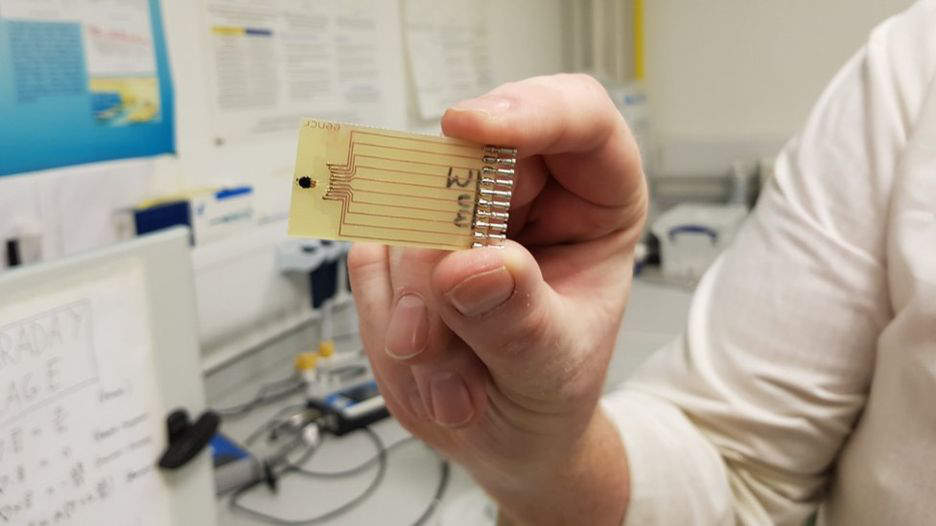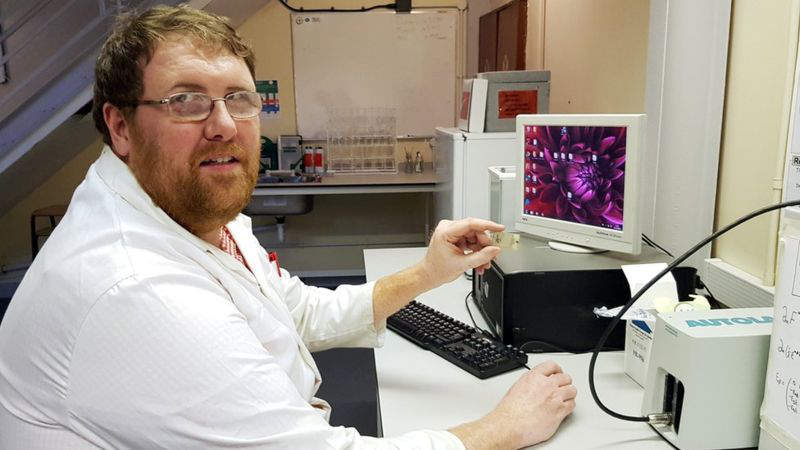
A new rapid test for early diagnosis of sepsis has been developed by University of Strathclyde researchers, which they say could save thousands of lives.
A microelectrode device analyses the patient’s blood and the results show in two-and-a-half minutes. Current diagnosis tests for sepsis can take up to 72 hours. The researchers hope that the low cost test could come into everyday use in three to five years.

UNIVERSITY OF STRATHCLYDE
It is estimated that 52,000 people in the UK die every year from sepsis which is a serious complication of an infection. Sepsis is when the body’s immune system starts to attack the body’s own organs,the condition can be fatal. It is hard to diagnose and can look like flu, gastroenteritis or a chest infection.
Early diagnosis of sepsis is important because for every hour that antibiotic treatment is delayed, the likelihood of death increases. Diagnosis of sepsis is usually based on body temperature, heart rate, breath rate and often a blood test which can take up to 72 hours.
The new test uses a device to detect if one of the protein biomarkers of sepsis is present in the blood. Dr Damion Corrigan, who helped develop the test, said IL-6 is one of the best markers of sepsis.

Dr Damion Corrigan with the microelectrode biosensor device STRATHCLYDE UNIVERSITY
Dr Damion Corrigan said: “At the moment, the 72-hour blood test is a very labour-intensive process – but the type of test we envisage could be at the bedside and involve doctors or nurses being able to monitor levels of sepsis biomarkers for themselves.
Dr Damion Corrigan thinks the tests will work well in GP surgeries and in A&E to help rule sepsis out or in.
He added: “It’s not just saving lives, a lot of people who survive sepsis suffer life-changing effects, including limb loss, kidney failure and post-traumatic stress disorder.”
The small device can be implanted and used on patients in intensive care and can detect when sepsis levels go up.
Sepsis symptoms:
In adults:
- Skin mottled or discoloured
- Severe breathlessness
- It feels like you’re going to die
- Passing no urine in a day
- Extreme shivering or muscle pain
- Slurred speech or confusion
In children:
- Is very lethargic or difficult to wake
- Feels abnormally cold to touch
- Breathing very fast
- Fit or convulsion
- Looks mottled, bluish, or pale
- Has a rash that does not fade when you press it
The project’s clinical adviser and co-author, Dr David Alcorn, from Paisley’s Royal Alexandra Hospital, said “The implications for this are massive, and the ability to give the right antibiotic at the right time to the right patient is extraordinary.
“I can definitely see this having a clear use in hospitals, not only in this country, but all round the world.”
The UK Sepsis Trust estimate earlier diagnosis and treatment across the UK would save at least 14,000 lives a year from sepsis.
Dr Ron Daniels, the trust’s chief executive officer, said: “Any kind of test that enables us to identify sepsis earlier, before symptoms even present themselves, could help save even more lives and bring us closer to our goal of ending preventable deaths from sepsis.
“Systems like this are so important as, with every hour before the right antibiotics are administered, risk of death increases.
“No test is perfect in the identification of sepsis, so it’s crucial we continue to educate clinicians to think sepsis in order to prompt them to use such tests.”